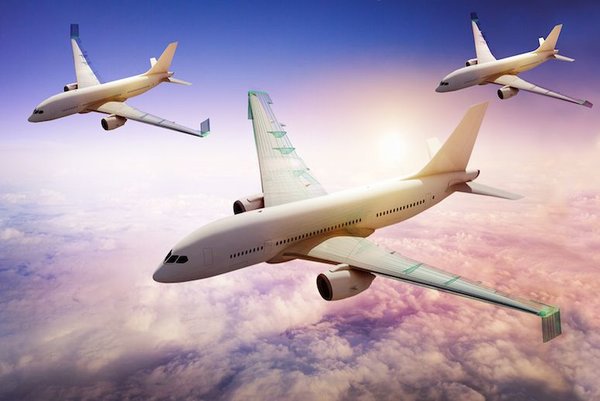NASA is funding projects with the potential to slash airplane greenhouse gas emissions by 75 percent.
The agency is targeting airline emissions, a major source of greenhouse gases. NASA last week announced that it was funding research into five new technologies under a “green aviation” initiative that it says could cut airplane fuel use in half, reduce aircraft noise, and most important, slash carbon emissions by as much as 75 percent.
The move comes just a month after the United States Environmental Protection Agency declared airline emissions a threat to human health and a contributor to climate change. This “endangerment finding,” which does not yet create any new rules for airlines, follows nine years of petitions and lawsuits by environmental organizations asking the EPA to regulate jetliner emissions.
The worldwide airline industry produced about 860 million tons of CO2 in 2015, a significant portion of the approximately 40 billion tons produced by all human activities last year, according to the Air Transport Action Group, a nonprofit industry group. That’s a little over 2 percent of all CO2 emissions last year.
Each of the research teams working on these concepts has been given a $2 million to $3 million budget and between two and two and a half years to explore their concepts, said Doug Rohn, director of NASA’s Transformative Aeronautics Concepts Program.
The research projects all have their own methods and goals, but there are similarities. “In general they are evaluating different materials, doing computer-based modeling of the concept, or running initial tests in the lab, all to explore aspects of the concept,” Rohn said. The main goal, he added, is to determine if each concept is feasible.
Conservation groups praised the NASA initiative. “It’s exciting,” said Marcie Keever, oceans and vessels program director for Friends of the Earth, one of the organizations suing the EPA. “The unfortunate side is we feel this should have happened nine years ago. If the EPA had been regulating, it would have already driven this kind of innovation.”
Haldane Dodd, head of communications for the Air Transport Action Group, said it takes a long time for the airline industry to adopt new technology because of its focus on safety. “Once the concept phases have been drawn up and investigated, the testing process is more rigorous than almost any other sector,” he said.
Dodd added that many new technologies and efficiency efforts come from research endeavors such as NASA’s. “There is quite a partnership between industry, governments, and research institutions on developing these types of efficiency measures,” he said.
If any of the current NASA research projects pan out, Rohn said the next step will be to conduct further studies to see how they will be used. After that, the results will be published in technical journals and presented at conferences. Some projects will result in patents that NASA can license to the industry.
Most important, Rohn said NASA is building the knowledge of what is or isn’t possible in reducing aviation emissions. “The transition of the concepts to actual eventual use depends on the answer to the feasibility question,” he noted.
Until the new technologies become available, Keever said the airline industry needs to be encouraged to do more to reduce emissions today. “There are things that the airline industry can do immediately to reduce CO2, just by being more efficient,” she said, pointing to a recent study by the International Council on Clean Transportation that identified the most fuel-efficient airlines. She added that it’s time for the EPA to move forward. “If no pressure is put on them, it can be years between the endangerment finding and actual regulation,” she said. “So many flights originate from and come to the U.S., we really need to be a leader on this.”
Source: Take Part
Women of Green is TURNING UP THE VOLUME of the feminine voice on the planet in order to create the world we know is possible.
